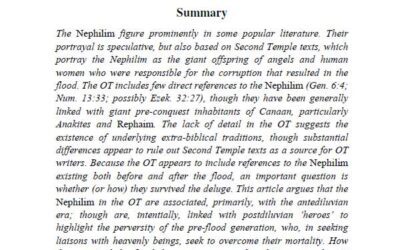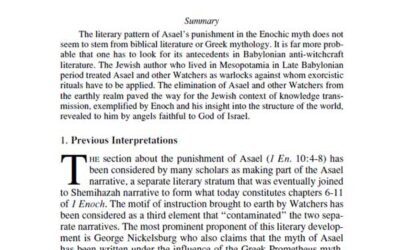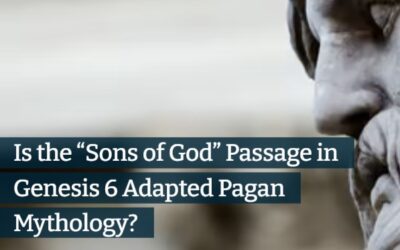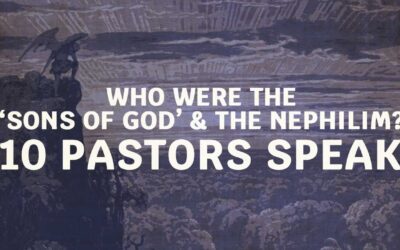Loren T. Stuckenbruck uncovers Genesis 6:1-4 interpretations in Second Temple Judaism. Delve into early apocalyptic traditions, revealing cautionary tales of human-divine interactions and the origins of evil.
Introduction
Among those who have dedicated themselves to studying Genesis is Loren T. Stuckenbruck, a historian of early Christianity and Second Temple Judaism.
In his research paper, “The ‘Angels’ and ‘Giants’ of Genesis 6:1-4 in Second and Third Century BCE Jewish Interpretation: Reflections on the Posture of Early Apocalyptic Traditions,” Stuckenbruck delves into his understanding of this intriguing passage during a critical period in Jewish history.
Author Background
Loren T. Stuckenbruck is a scholar in the fields of early Christianity and Second Temple Judaism, currently serving as a professor of New Testament at the University of Munich in Germany. With numerous publications to his credit, including over 160 articles and several books, Stuckenbruck has established himself as an authority in this area of study.
Research Focus
Stuckenbruck’s research paper examines the interpretations of Genesis 6:1-4 within the framework of Second Temple Judaism. The paper argues that these interpretations were influenced by the prevailing apocalyptic worldview of that period.
“The purpose of this article is, with reference to Gen. 6:1-4, to describe this diversity among the early Jewish apocalyptic writings and to consider what was at stake among those who read the biblical tradition as an account relating to the introduction of evil into the world.
“In order to achieve this aim, I shall first briefly discuss the biblical texts, and then proceed to describe the role of “giants” in some of the euhemeristic sources, followed by a discussion of apocalyptic traditions which may in some measure be understood as a response to these sources.”
Loren T. Stuckenbruck
Biblical Background of the Sons of God and Nephilim
One significant aspect discussed in the paper is the understanding of the “sons of God” and the dangers associated with their interaction with human women. Stuckenbruck highlights that many interpretations viewed the “sons of God” as fallen angels who, in their rebellion, engaged in illicit relationships with mortal women.
The resulting offspring, the “giants,” were considered as monstrous beings that brought chaos and violence into the world. Through this lens, Genesis 6:1-4 served as a cautionary tale, warning against the perils of divine-human unions.
Genesis 6:1-4 and the Origin of Evil
The research paper also underscores the notion that interpretations of Genesis 6:1-4 sought to explain the origins of evil. Stuckenbruck posits that these interpretations understood the “giants” as the ancestors of wicked nations that would later oppose Israel. The passage, therefore, served as a clarion call to Israel, emphasizing the importance of remaining faithful to God in the face of pervasive evil.
Apocalypse
Stuckenbruck concludes his paper by highlighting the correlation between the interpretations of Genesis 6:1-4 and the broader apocalyptic worldview of Second Temple Judaism. This period was characterized by a heightened sense of urgency, with a belief that the end times were imminent.
As such, the story of Genesis 6:1-4 was seen as a warning about the dangers inherent in the present age, urging repentance and unwavering fidelity to God.
Conclusion
Loren T. Stuckenbruck’s research paper provides valuable insights into the diverse interpretations of Genesis 6:1-4 within Second Temple Judaism. By examining the wider apocalyptic worldview of that era, Stuckenbruck underscores the cautionary and eschatological nature of these interpretations.
If you’d like to read more of this subject, explore resources on Chasing the Giants — a platform that provides a comprehensive database of ancient sources related to Genesis 6:1-4.
Note: The research paper “The “Angels” and “Giants” of Genesis 6:1-4 in Second and Third Century BCE Jewish Interpretation: Reflections on the Posture of Early Apocalyptic Traditions” by Loren T. Stuckenbruck was published by Brill.






